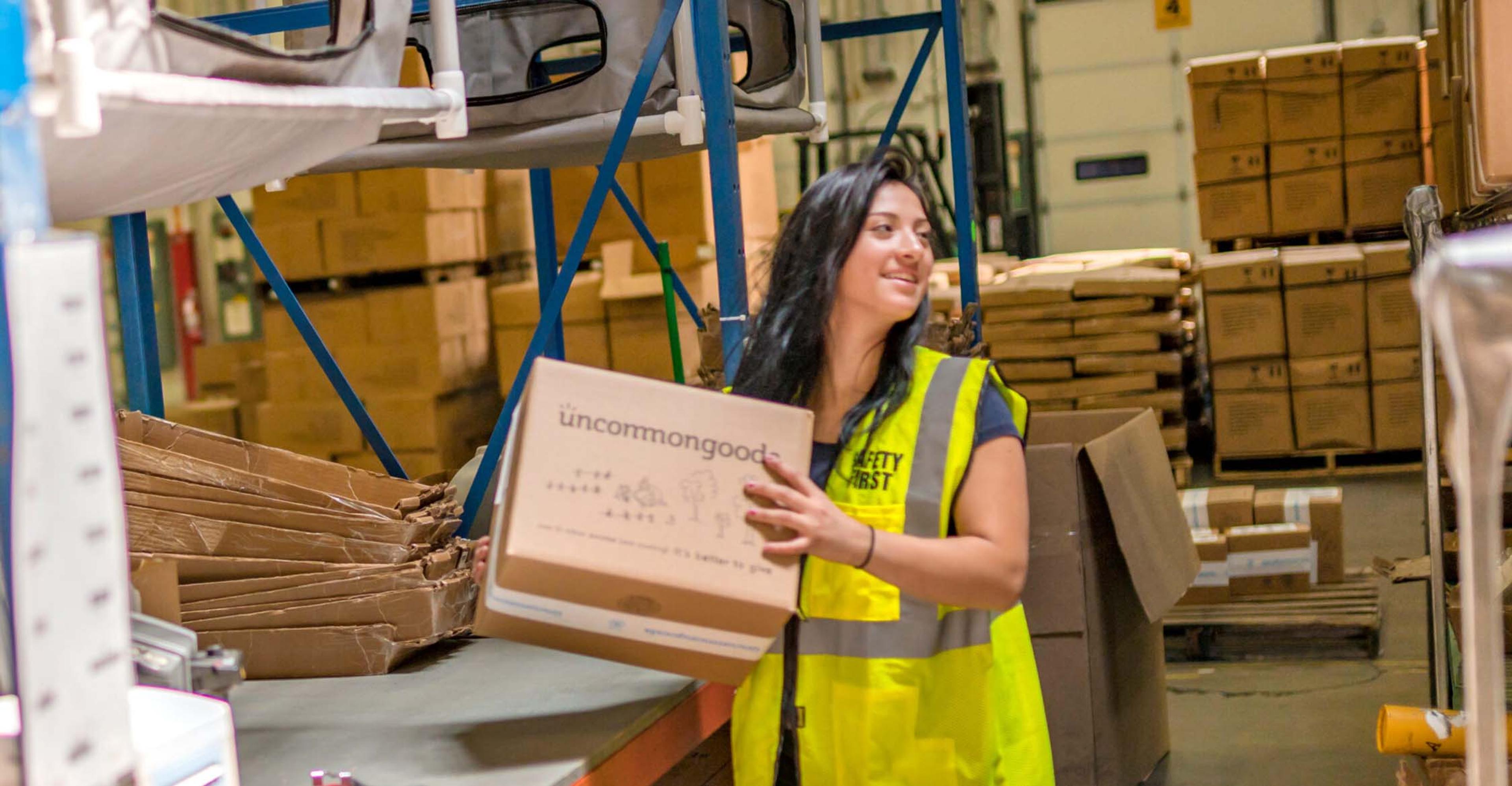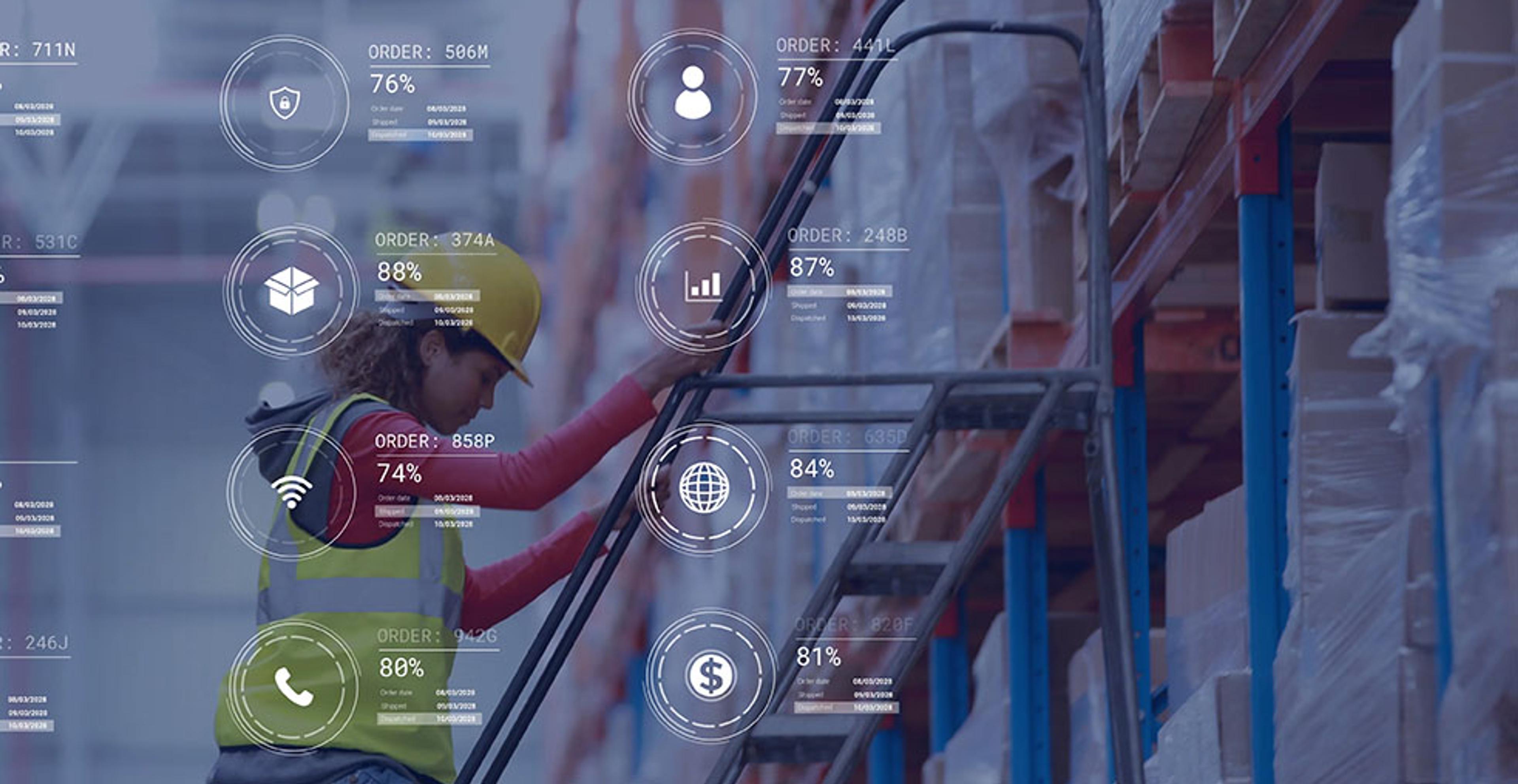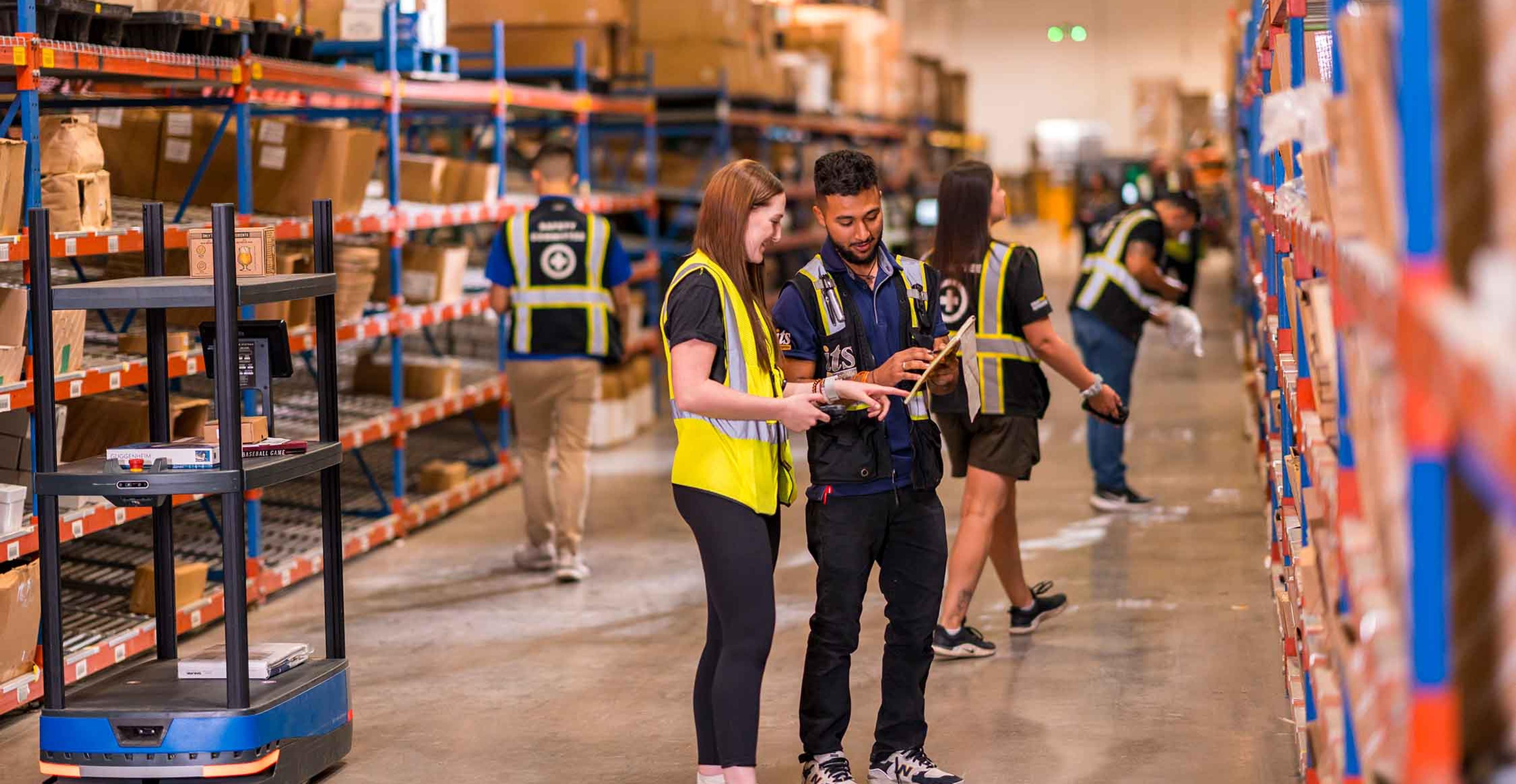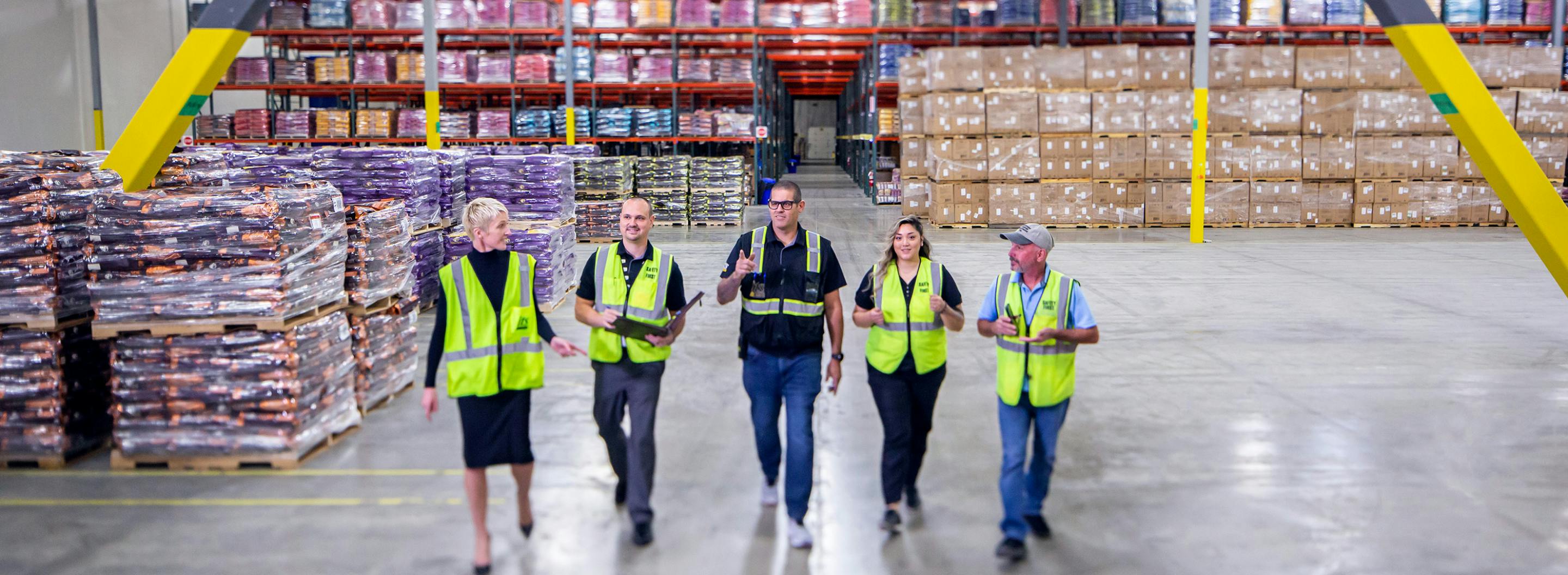Warehouse Capacity, Availability, and Forecasting for 2023

Warehouse capacity availability to remain constrained in 2023
Demand for industrial space hit a record high in 2022 and rental rates for warehousing increased more than 40% in some US markets. Retail inventories continue to soar, eating up warehouse space as orders arrived from overseas and consumers cut back on spending. Retailers offered discounts on overstocked items throughout the holiday season, but inventory levels remain too high to feasibly carry into the new year. Prices on goods continue to be slashed to hopefully clear out space for new products that will be arriving soon.
Record levels of warehouse construction throughout the United States has not stopped the tightening of the national industrial market. The development pipeline in November 2022 increased to more than 742 million square feet, equal to just 4% of existing inventory. Federal Reserve rate increases are expected to do little to change the cadence of robust leasing activity, low vacancy rates, and soaring rents into next year.
We sat down with Bryan Gardner and Cam Kucic, two experts in industrial real estate, to explore what is coming for warehouse leasing, available space, and development in 2023 and beyond.
Meet the commercial real estate experts:
Bryan Gardner, SIOR | Executive Vice President of McIntyre Real Estate Services
Bryan Gardner, SIOR is an Executive VP with McIntyre Real Estate Services and has over 25 years of commercial real estate experience. He has a proven track record in providing timely solutions for occupiers of manufacturing and logistics warehouse space. He has conducted numerous site selection assignments on a local, regional, and national basis. His team focuses on providing results, building trust resulting in long term relationships. Bryan has been recognized regionally and nationally for notable leases and developments throughout North America.
Prior to working in commercial real estate, he worked for Anheuser Busch – Coast Beverage in sales and merchandising. He also spent 7 years as a professional ski patrolman most notably at Heavenly Mountain ski resort. Bryan is a member of the Society of Industrial and Office Realtors (SIOR) the leading global association of the most knowledgeable, experienced and successful in the industry. He is also an active member with the Council of Supply Chain Management Professionals (CSCMP) and Warehouse Education and Research Council (WERC).
Cam Kucic, SIOR | Senior Vice President of Colliers International | Indiana Region
Cam has over 16 years experience specializing in industrial advisory services, with heavy emphasis in tenant representation projects within an extensive area of central Indiana. His diverse assignments include manufacturing facilities, mixed office and industrial flex properties, build-to-suit projects, and the full range of warehouse and distribution requirements. Cam has also represented clients with out-of-market distribution/logistics ventures and has a solid understanding of multi-faceted elements required. He approaches each assignment with diligence and his bottom-line mindset enables him to optimize the value of his clients’ real estate transactions.
CAM is a member of the Society of Industrial and Office Realtors (SIOR) the leading global association of the most knowledgeable, experienced, and successful in the industry. He is also an active member with the Council of Supply Chain Management Professionals (CSCMP), International Warehouse Logistics Association (IWLA) and Colliers International Logistics & Transportation Solutions Group.
Rent growth for warehousing has exceeded 10%, will prices continue to rise in 2023?
BG: I can see prices continuing to rise, but we should see the prices starting to stabilize and/or slow down. We are getting to that point where the pricing is beginning to be a burden, especially for the smaller tenants. However, how much it will slow down will depend, market by market. Certain markets have gone up quite a bit, like in the Reno MSA we had close to a 50% rise in 2022. Property owners have also been experiencing an increase in the yearly rental escalations over the term of the lease which have crept up from say 3% to 5% in some markets.
CK: Warehouse pricing should begin to stabilize in 2023. We are starting to see some of the construction materials stabilize and lead times have shortened for some materials. The rental rates were increasing due to the large tenant demand and construction prices growing rapidly. Due to covid and other disasters, companies couldn’t keep up to produce the materials needed. I don’t think we will see the rent growth that we have seen in the past as tenant demand softens and developers walk away from potential projects that they have under contract. Some materials are still hard to get like concrete, steel, switch gear and roofing materials, but hopefully these will stabilize in 2023.
How far would demand have to fall to correct the imbalance? What if it fell to zero?
CK: Demand has begun to soften, and the current pipeline should right the ship. Predictions are that vacancy across the country will rise by 100 – 150 base points through 2023. If demand fell to zero, we aren’t sure that would fix it. Some markets are tighter than others. A tenant might find in one size range there are several options, but in another size range it is very limited. The smaller tenants could use some relief because there were not very many developers producing any product for a tenant that has a need for less than 100,000 square feet. Here in Indianapolis, we have a 4% vacancy right now, but pre-covid it was probably more 6 to 7%. We are still tracking 18 to 24 million square feet in deals. If demand fell to zero here in Indy, we would still have enough inventory for the next two to three years.
BG: If new demand fell to zero, naturally the vacancy rate would rise. The question is, would the vacancy rate rise to where it needs to be to meet demand? Reno is under 1% vacancy and so is the Inland Empire. Maybe we see these markets go up 150 basis points, but we would still be under that vacancy threshold of 4%. That 4% is really when you get back into equilibrium. Some markets, like Phoenix, are already at 4% and that is going to make it a better market for a tenant–as opposed to the landlord calling the shots. For the super tight markets, they will see the most relief. But at the end of the day, we are still in a landlord’s market.
Are there many new US warehouses in the pipeline? What are the predictions for new starts?
CK: Developers are slowing down, pressing the pause button, and taking a “pencils down” approach. Federal interest rates have affected warehouse starts and the general feeling is to wait and see what happens in 2023. The rising cap rates make it difficult to get anything to really work. During covid, the cap rates were going down as construction and rent were skyrocketing. This was a substantial benefit for developers, but now as the cap rates are rising it is hard to make the returns needed without knowing where the rental and debt rates will be in the near future. The pause button is probably temporary, things will most likely pick back up again in Q2, maybe in Q3. At the end of the third quarter in our most recent stats, there were 132.2 million square feet of warehouse product under construction throughout the country. In Indianapolis in 2022, we had 24.4 million square feet of product that was delivered. Right now, we have 23.4 million square feet under construction but in 2023 we only have 9.7 million square feet of product with tentative groundbreaking. In pre-covid, we were typically a 10-12 million square foot market with construction delivery. We doubled those numbers essentially last year and now we are returning to under pre-covid numbers with a slight pullback this year. We could potentially see a shortage of buildings in 2024 if tenant demand keeps up.
BG: I agree with Cam. There are a lot of projects in the pipeline and a lot of land that was acquired for current and future development. There is a lot of land going through entitlement, but along the way we had a pause because interest rates went up substantially in the last year and a half. A lot of these developers are pulling back on the reins, but there is still a lot of land that they are carrying. There will be a lot of projects coming out of the ground. We will probably continue to see a drop in demand, but many distribution companies are reconfiguring their supply chain based on changes at the ports and how those will shape out. But come 2024/2025, there is speculation that the rates will come back down. At the same time, a lot of new construction is being forecasted for the future and you could see the warehouse development shooting up higher in 24/25.
What are some headwinds for new warehouse builds? What has caused building and material costs to increase?
BG: Some of the changes are covid-related due to supply chain interruptions. Much of the products used in building have been outsourced to places like Mexico, Puerto Rico, and Asia. There were massive delays of those products coming into the US throughout 2020 and 2021. When Texas experienced its big freeze, the petrochemicals that are produced in the state were knocked offline for about 3 or 4 months, causing more delays. Eventually the industry experienced rationing of concrete and roof insulation to further slowdown the construction of new warehouses. At the end of the day, you couldn’t get enough materials for your project and would have to wait for it to arrive before you could finish. Then on top of all that, there was a labor issue when construction workers couldn’t work steadily and would move on to the next job. However, recently we spoke with Garry Weiss with Arco Murray Construction, a national design build firm, and he said construction costs have gotten very fluid and they are starting to see a light at the end of the tunnel with more availability and some modest decreases in the cost of construction materials
CK: Bryan said it well, there were labor constraints with covid and one thing on top of another. I was personally aware of company in Minnesota whose crew got hit hard with covid, delays, etc. Everything compounded and they found it next to impossible to play catch up.
Are sustainable warehouses the new normal? What are some of the barriers for sustainable building?
CK: You hear these sustainable warehouses discussed everywhere, but developers are building their developments based on tenant requirements. Occupiers are more sophisticated than ever, and their requirements are highly automated and labor intensive. These demands have changed where boxes are, where products sit in the fulfillment center and taller buildings are now required. Many occupiers are currently looking for 45’ clear facilities with heavy power, lots of parking and more building and park amenities with a greater focus on ESG (Environmental, Social, and Governance). The user is learning more every day. I haven’t seen the development catch up yet, at least on a spec basis. Most developers are building to a spec to get the returns that they need.
BG: Take solar, for instance, it is really in its infancy and not too long ago there were reported issues of small fires on the roof top, but like anything else they will dial it in. I would say approximately 15 years ago builders started taking baby steps to construct a more sustainable facility. The balancing act was not to price your building out of the market but shoot for LEED certification that is still at a market price. Baby steps have seen buildings install white roofs to reflect heat and install water efficient landscaping on the exterior as well with an attractive design. Inside the facility we have seen HVLS fans for better interior airflow, maximizing skylights with daylight harvesting, and motion sensors on new LED lights, which decreases energy consumption putting less stress on the grid. Customers and investors today want facilities that have sustainable features and occupiers/tenants also see the benefit of employee retention. All these baby steps in the most modern buildings also help achieve lower energy and water consumption and lowering carbon emissions.
Where are some of the best places in the US to build a warehouse? Where are some of the most challenging?
CK: Some of the greatest emerging markets right now, and I think this has a lot to do with the ports, are Savannah, GA, and Charleston, SC. Places like Phoenix, AZ, Salt Lake City, and Reno/Sparks, NV are emerging markets as well. These last three could have a lot to do with the migration of people out of California and the access you still have to the ports. A lot of the viability of a market is labor-dependent. Going into markets where the demographics are growing substantially gives an indication of a strong labor market. Another consideration is the weather. Droughts are affecting microchip companies’ decisions due to the demand for utilities. We could potentially see these types of companies move towards the southeast United States. When assessing the area, you might look at a 30-minute analysis and see the area as a viable option. However, there are so many warehouses that the workforce won’t drive more than 15-minutes. Why would they when they could work at a closer warehouse?
BG: As far as the best places to build are concerned, it’s sort of like forecasting into the future. You have a renewed interest in transferring more capacity to port cities in the Atlantic and Gulf of Mexico, which need more modern distribution space. West Coast Ports and all those markets have very limited supply of warehouse space. There’s this renewed concept of onshoring, but because of labor constraints it relates more to nearshoring, like considering Mexico. From there, what are the inland ports? There’s Dallas and Phoenix and to a lesser extent Southern California, and an intermodal rail play to Kansas City. These are definitely markets to consider. From a more strategic point-to-point view, the formula for a more exacting location has transformed from a simple equation to a much more complex formula. This is where site consultants come into play. They can perform labor studies, compare incentives, transportation, and power costs, etc. and help a company decide the best solution for a new location. A great question to ask is: when does the area’s labor peak out and is it big enough to support the company? If you don’t have the time or bandwidth to handle an extensive site search, reach out to a 3PL and see if they can provide you with a timelier solution with less capital outlay.
Have there been shifts in geographical benefits since the pandemic? Are states competing on incentives?
BG: Several states, including Indiana, Texas, Tennessee, Georgia, and South Carolina to name a few, have seen shifts because of the boom of distribution and fulfillment. When it comes to incentives, distribution companies don’t get much love. However, for manufacturing companies and any company focused on green energy, there is a lot of money out there. If you are a smaller company in these categories, I recommend looking for a smaller community to join. Stay away from the major metros and seek out an economic development agency in a smaller city that can work with you. These cities are looking to diversify and are better equipped to support growth, rather than competing with big corporate names.
CK: The incentives at the state level are heavily driven by employee count. The states are attracting a lot of groups to come, but the ones that will be rewarded will depend on that employee count or the cap ex.
How has consumer behavior shifted geographically in North America?
CK: The shifts have driven a lot of projects, for example Dallas has 76 million square feet under construction. People are migrating towards new places for quality of life, weather, and cost of living. That’s what will continue to drive these projects. A perfect example is people who have vacated New York for Florida, and the many real estate projects that have popped up as a result. And you are seeing the growth in the businesses in those markets.
BG: You take states like Georgia, which is a hub for electric automotive, and you look at the jobs there. There are 24,000 new jobs just in the EV vertical in the state. But then you hear about states like California, where there has been a big exodus. But as soon as space is vacated to relocate out of state, their building gets swooped up in no time. There is no doubt a continued push for people moving south. Phoenix, AZ, for instance with several new microchip plants under construction, has a lot of more homes and condos on the market than there were a year ago. But the price point has not come down because of steady demand. Then on the other hand, you take somewhere like Nashville where Amazon and Apple are expanding. Today, Nashville’s traffic may be worse than San Francisco. So, the shifts come at a cost.
What other challenges are out there?
CK: Even in states like Indianapolis, where there is a ton of land development, the infrastructure is struggling to keep up. Depending on the use and the markets, labor could be challenging due to a low population that may not be skilled for the job. The roads in these areas don’t have the capacity to handle the traffic that come with these developments. These buildings are being developed, but the roads around them are not and the pace is off.
BG: One challenge facing the developers is having entitled land sites available for future developments with adequate infrastructure. While in many markets the supply of land is dwindling developers are looking at tear downs and/or repurposing buildings. Another challenge that we are seeing across the county are more and more of is the “NIMBY’s” or Not in My Backyard. The push/pull is that they want the prime package delivered tomorrow, but they don’t want the last mile distribution center in the neighborhood.
Choosing a trusted logistics partner
Warehousing capacity continues to be constrained as inventory levels remain high across the United States. Partnering with a trusted logistics provider can help you to reverse engineer your supply chain. Our dedicated team can help forecast around the manufacturing capabilities of your product to avoid overstocking. Reach more customers in North America with a diversified distribution network. ITS has 1.8 million square feet of warehouse space coming online in 2023. Contact us for more information on available warehouse space today.
Market by market commercial real estate data:
- Dallas leads the development pipeline with a whopping 62.6 million square feet underway
- Phoenix currently has 52.5 million square feet under construction
- Nashville’s average single-market vacancy rate leads the charge as it has tightened to 1 percent
- Southern California has some of the lowest vacancy rates in the nation, with the Inland Empire at just 1.2 percent
- Los Angeles and Orange County have a vacancy rate of 2.2 percent and 3 percent, respectively
Discover how ITS Logistics has helped their customers
- Caraway Sees 280% Order Volume Increase and Expands into Omnichannel Fulfillment
- Common Challenges, Uncommon Solutions
- ITS Logistics and Starbucks – A Perfect Blend



